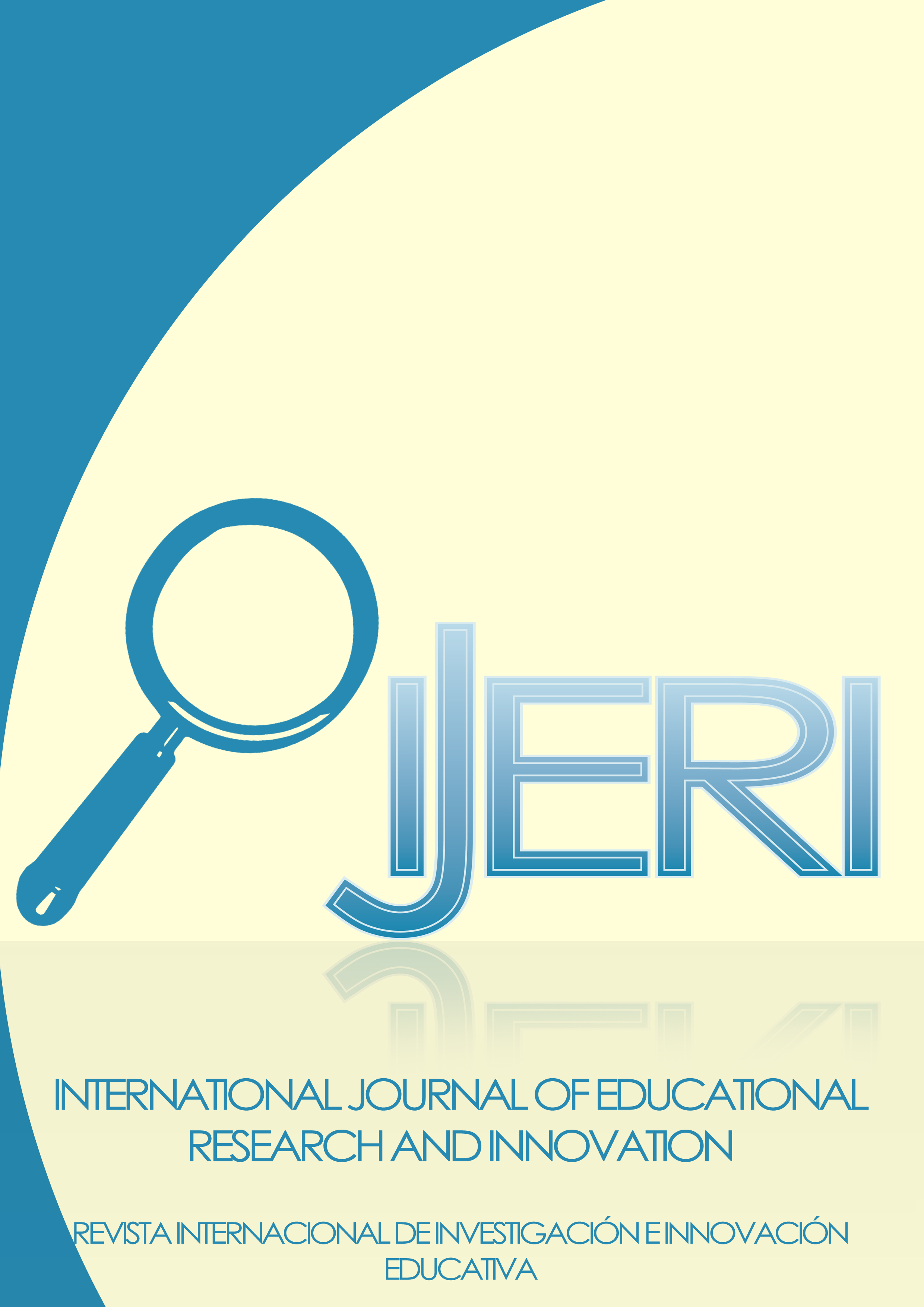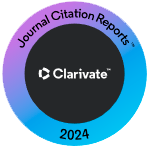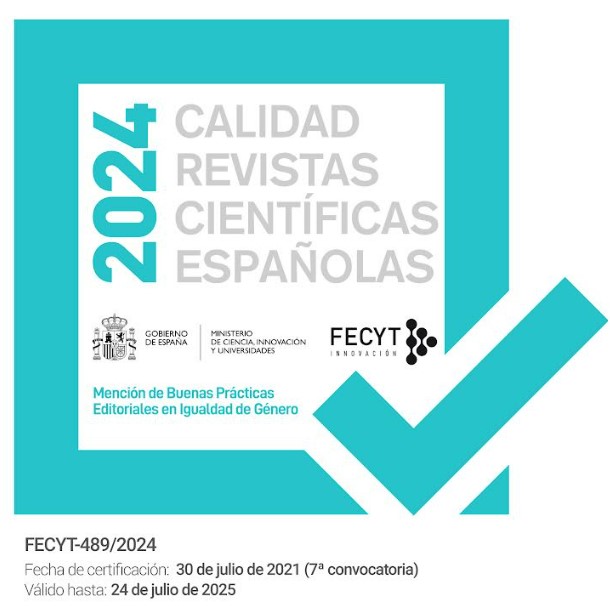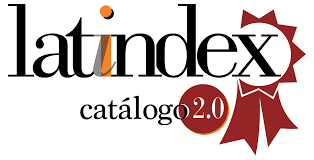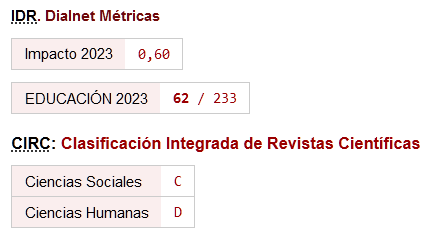Online Education amid COVID-19 Crisis
Issues and Challenges at Higher Education Level in Pakistan
DOI:
https://doi.org/10.46661/ijeri.6429Keywords:
online education, COVID-19, higher education, digital divide, technologyAbstract
The objective of this study is to examine the main constraints experienced in the online mode of education during this pandemic at higher education level in Pakistan. The COVID-19 pandemic credibly transformed the method of learning and teaching from face to face to online. In unexpected sudden septicity, universities in Pakistan have started online education without proper instructional provision and relevant experience. For this purpose, the data is collected from 750 students and teachers across all over the regions in Pakistan. The study has used partial least square structural equation modeling (PLS-SEM). The findings show that technological bottlenecks, institutional preparedness, and digital divide are significant challenges. The differences in perceptions of rural and urban areas are also very important referring to several policies implications, implementing information communication technology (ICT), friendly curriculums, enhancing online accessibility and infrastructure development. This study contributes to help universities for developing effective e-learning policies for students in the situation of COVID-19.
Downloads
References
Abbas, W., Ahmed, M., Khalid, R., & Yasmeen, T. (2017). Analyzing the factors that can limit the acceptability to introduce new specializations in higher education institutions: A case study of higher education institutions of Southern Punjab, Pakistan. International Journal of Educational Management, 31(4), 530-539.
Abdon, B. R., Ninomiya, S., & Raab, R. T. (2007). E-learning in higher education makes its debut in Cambodia: The provincial business education project. International Review of Research in Open and Distributed Learning, 8(1), 1-14.
Ackerman, E. (2013). The bring-your-own-device dilemma. [Resources_At Work]. IEEE Spectrum, 50(8), 22-22.
Aczel, J. C., Peake, S. R., & Hardy, P. (2008). Designing capacity-building in e-learning expertise: Challenges and strategies. Computers & Education, 50(2), 499-510.
Adedoyin, O. B., & Soykan, E. (2020). Covid-19 pandemic and online learning: the challenges and opportunities. Interactive Learning Environments, 1-13. https://doi.org/10.1080/10494820.2020.1813180
Almanthari, A., Maulina, S., & Bruce, S. (2020). Secondary school mathematics teachers’ views on e-learning implementation barriers during the COVID-19 pandemic: The case of Indonesia. Eurasia Journal of Mathematics, Science and Technology Education, 16(7), em1860.
Anderson, A. (2020). COVID-19 outbreak highlights critical gaps in school emergency preparedness. Brookings Institution: Washington, DC, USA.
Apuke, O. D., & Iyendo, T. O. (2018). University students’ usage of the internet resources for research and learning: Forms of access and perceptions of utility. Heliyon, 4 (12), e01052.
ASCD. (2020). A New Reality: Getting remote learning right. Alexandria. VA, ASCD. https://www.educationalleadership-digital.com/educationalleadership/april_2020_special_report_free/MobilePagedReplica.action?pm=2&folio=6#pg8
Basilaia, G., & Kvavadze, D. (2020). Transition to online education in schools during a SARS-CoV-2 coronavirus (Covid-19) pandemic in Georgia. Pedagogical Research, 5(4), 1-9.
Berman, S. D. (2008). 62. The Return of Educational Radio? International Review of Research in Open and Distributed Learning, 9(2), 1-8.
Bunyan, S., & Collins, A. (2013). Digital exclusion despite digital accessibility: empirical evidence from an English City. Tijdschrift voor economische en sociale geografie, 104(5), 588-603.
Burge, E. J., Gibson, C. C., & Gibson, T. (Eds.). (2012). Flexible pedagogy, flexible practice: Notes from the trenches of distance education. Athabasca University Press.
Burns, M. (2020). Emergency teaching online: 7 steps to get started. Global Partnership for Education.
Burns, M. (2020). School, interrupted: 4 options for distance education to continue teaching during COVID-19. Global Partnership for Education. https://www.globalpartnership.org/blog/school-interrupted-4-options-distance-education-continue-teaching-during-covid-19
Casey, J., & Wilson, P. (2005). A practical guide to providing flexible learning in further and higher education. Quality Assurance Agency for Higher Education Scotland, Glasgow. https://www.enhancementthemes.ac.uk/docs/ethemes/flexible-delivery/a-practical-guide-to-providing-flexible-learning-in-further-and-higher-education.pdf?sfvrsn=1c2ef981_8
Riddlesden, Dean, and Alex D. Singleton. (2014). "Broadband speed equity: A new digital divide?" Applied Geography, 52, 25-33.
David, R., Pellini, A., Jordan, K., & Philips, T. (2020). Education during the COVID-19 crisis: opportunities and constraints of using EdTech in low-income countries. Zenodo.
Digital Rights Foundation (2020). The Digital Gap During the COVID-19 Pandemic is Exasperating Inequalities. March 31, 2020 - Comments Off on Joint Statement by Digital Rights Foundation and BoloBhi. https://digitalrightsfoundation.pk/joint-statement-by-digital-rights-foundation-and-bolobhi-the-digital-gap-during-the-covid-19-pandemic-is-exasperating-inequalities/
Education Endowment Foundation (2020). Remote Learning; Rapid Evidence Assessment. EdTech Hub: [Online]: https://educationendowmentfoundation.org.uk/public/files/Publications/Covid-19_Resources/Remote_learning_evidence_review/Remote_Learning_Rapid_Evidence_Assessment.pdf
Emeka, U. J., & Nyeche, O. S. (2016). Impact of internet usage on the academic performance of undergraduates students: A case study of the university of Abuja, Nigeria. International Journal of Scientific & Engineering Research, 7(10), 1018-1029.
Farooq, F., Rathore, F. A., & Mansoor, S. N. (2020). Challenges of online medical education in Pakistan during COVID-19 pandemic. J Coll Physicians Surg Pak, 30(6), 67-9.
Fasae, J. K., & Adegbilero-Iwari, I. (2015). Mobile devices for academic practices by students of college of sciences in selected Nigerian private universities. The Electronic Library, 33(4), 749-759.
Ferdinand, E. (2020). KNUST suggests September 2020 for WASSCE,' rejects' Entrance Exams for Prospective Students amidst COVID-19 Pandemic. Education Ghana. 10 April 2020. https://educationghana.net/index.php/2020/04/10/knust-suggestsseptember-2020-for-wasscerejectsentrance-exams-for-prospective-studentsamidst-covid-19/
Fifield, A. (2020). In China, 200 million kids have gone back to school. Online. The Washington Post. (February 17) https://www.washingtonpost.com/world/asia_pacific/in-china-200-million-kids-have-gone-back-to-school-online/2020/02/17/e5cc6f10-5131-11ea-80ce-37a8d4266c09_story.html
Giannini, S., & Albrectsen, A. B. (2020). Covid-19 school closures around the world will hit girls hardest. Erişim Tarihi, 3.
Global Digital Report (2019). Digital 2019 Global Digital Overview,. https://datareportal.com/reports/digital-2019-global-digital-overview
Goode, S., Willis, R., Wolf, J., & Harris, A. (2007). Enhancing IS Education with Flexible Teaching and Learning. Journal of Information Systems Education, 18(3), 297–302.
Gordon, N. (2014). Flexible pedagogies: Technology-enhanced learning. The Higher Education Academy, 1-24.
Harris, D. N. 2020. "A broad strategy for schools during the COVID-19 pandemic." Brookings. Brown Center Chalkboard (blog post March 27). https://www.brookings.edu/blog/brown-center-chalkboard/2020/03/27/a-broad-strategy-for-schools-during-the-covid-19-pandemic/
Huang, R., Chen, G., Yang, J., & Loewen, J. (2013). The new shape of learning: Adapting to social changes in the information society. In Reshaping learning (pp. 3-42). Springer, Berlin, Heidelberg.
Huang, R. H., Liu, D. J., Tlili, A., Yang, J. F., & Wang, H. H. (2020). Handbook on facilitating flexible learning during educational disruption: The Chinese experience in maintaining undisrupted learning in COVID-19 outbreak. Beijing: Smart Learning Institute of Beijing Normal University, 1-54.
Hundred (2020). Quality Education for all during Covid-19. [Online]. https://hundred.org/en/collections/quality-education-for-all-during-coronavirus
Inclusive Internet. (2020). Inclusive Internet Index. Economist impact. https://theinclusiveinternet.eiu.com/explore/countries/performance
INEE (2020a). ICT Inventory for Education in Emergencies. Using technology to ensure and improve education in crisis contexts. [Online]. https://ict.ineesite.org
INEE (2020b). Distance learning during Covid-19. Continuing Education in low-tech and low-resource environments. Webinar 7th April 2020. Summary [Online]. https://inee.org/system/files/resources/Covid-19%20Webinar%20Series%20-%20Webinar%203.pdf
INEE (2020c). Technical Note on Education during the Covid-19 Pandemic. [Online]. https://inee.org/system/files/resources/INEE%20Technical%20Note%20on%20Covid-19%20EN%202020-04-23.pdf
Jacobs, P. (2014). Engaging Students in Online Courses. Research in Higher Education Journal, 26, 1-9.
Jalli, N. (2020). Lack of internet access in Southeast Asia poses challenges for students to study online amid COVID-19 pandemic. The Conversation, 17.
Joe Hallgarten, Kristine Gorgen and Kate Sims. (2020). Overview of emerging country-level response to providing educational continuity under Covid-19: What are the lessons learned from supporting education in conflicts and emergencies that could be relevant for [Online] https://edtechhub.org/wp-content/uploads/2020/05/supporting-education-conflict.pdf
Jones, S. H. (2015). Benefits and challenges of online education for clinical social work: Three examples. Clinical Social Work Journal, 43(2), 225-235.
Khan, A. A., Niazi, S., & Saif, S. K. (2020). Universities unprepared for switch to remote learning. University World News.
Kock, N. (2015). One-tailed or two-tailed P values in PLS-SEM? International Journal of e-Collaboration (IJeC), 11(2), 1-7.
Kohli, S., and H. Blume. 2020 (March 12). L.A. Unified plans for teaching by television after canceling all large gatherings. Los Angeles Times.
https://www.latimes.com/california/story/2020-03-11/lausd-events-cancelled-coronavirus
Koole, M. (2014). Identity and the itinerant online learner. International Review of Research in Open and Distributed Learning, 15(6), 52-70.
Kumar, A., Reddy, P., Tewari, A., Agrawal, R., & Kam, M. (2012). Improving literacy in developing countries using speech recognition-supported games on mobile devices. In Proceedings of the SIGCHI conference on human Factors in Computing systems (pp. 1149-1158).
Lee, M. J., & McLoughlin, C. E. (2010). Beyond distance and time constraints: Applying social networking tools and Web 2.0 approaches in distance education. Athabasca University Press.
Limperos, A. M., Buckner, M. M., Kaufmann, R., & Frisby, B. N. (2015). Online teaching and technological affordances: An experimental investigation into the impact of modality and clarity on perceived and actual learning. Computers & Education, 83, 1-9.
Littlefield, J. (January 14, 2018). The Difference Between Synchronous and Asynchronous Distance Learning. https://www.thoughtco.com/synchronous-distance-learning-asynchronous-distancelearning-1097959
Mayes, R., Luebeck, J., Yu Ku, H., Akarasriworn, C., & Korkmaz, O. (2011). Themes and strategies for transformative online instruction. The Quarterly Review of Distance Education, 12, 151–166.
McAleavy, T. and Gorgen, K. (2020). Overview of emerging country-level response to providingeducational continuity under Covid-19: Best practice in pedagogy for remote teaching. EdTech Hub: [Online] https://edtechhub.org/wp-content/uploads/2020/04/research-best-practicepedagogy-remote-teaching.pdf
McAleavy. T., Hall-Chen, A., Horrocks, S., & Riggall, A. (2018). Technology-supported professional development for teachers: lessons from developing countries. Education Development Trust. [Online]. https://www.educationdevelopmenttrust.com/EducationDevelopmentTrust /files/34/3463d85a-031c-4f1e-9002-969b4daf4cdf.pdf
Moore, R., & Marshall, L. (2020). Access to digital learning during COVID-19 closures: Compounding educational inequality. Young Lives.
Muhammad A., & Kainat A. (2020). Online learning amid the COVID-19 pandemic: Students' perspectives https://files.eric.ed.gov/fulltext/ED606496.pdf
Mumtaz, M. (2021). COVID-19 and mental health challenges in Pakistan. International Journal of Social Psychiatry, 67(3), 303-304.
Najib, F. & Ranjan, P. (2020). Reaching Remote Students and Families in Pakistan Using Radio As a response to COIVD-19. Hundred. 27 March 2020. [Online]. https://hundred.org/en/articles/reachingremote-students-and-families-in-pakistanusing-radio-as-a-response-to-covid-19
Nishat Riaz and Michael Houlgate (2019). Technology in the classroom. Published in The News. https://www.thenews.com.pk/print/432465-
Niyigena, J. P., Jiang, Q., Ziou, D., Shaw, R. S., & Hasan, A. S. M. (2020). Modeling the Measurements of the Determinants of ICT Fluency and Evolution of Digital Divide Among Students in Developing Countries—East Africa Case Study. Applied Sciences, 10(7), 2613.
Nwezeh, C.M., 2010. The impact of Internet use on teaching, learning and research activities in Nigerian universities: a case study of Obafemi Awolowo University. Electron. Libr. 28 (5), 688-701.
Ozdemir, O., & Bonk, C. J. (2017). Turkish teachers' awareness and perceptions of open educational resources. Journal of Learning for Development, 4(3), 307-321.
Park, H. W. (2009). Academic Internet Use: Issues and Lessons in e-Research. A paper presented to the Communication and Technology Division, the 59th Annual ICA (International Communication Association) Conference, Chicago, Illinois USA (Chicago Marriott Downtown Magnificent Mile, May 21-25, 2009).
Paul, K. (2020). ‘Zoom is malware’: why experts worry about the video conferencing platform.” The Guardian (April 2). https://www.theguardian.com/technology/2020/apr/02/zoom-technology-security-coronavirus-video-conferencing
Pelech, W., Wulff, D., Perrault, E., Ayala, J., Baynton, M., Williams, M., ... & Shankar, J. (2013). Current challenges in social work distance education: Responses from the Elluminati. Journal of Teaching in Social Work, 33(4-5), 393-407.
Petrina, S. (2007). Instructional methods and learning styles. In Advanced Teaching Methods for the Technology Classroom (pp. 91-122). IGI Global.
Qureshi, I. A., Ilyas, K., Yasmin, R., & Whitty, M. (2012). Challenges of implementing e-learning in a Pakistani university. Knowledge Management & E-Learning: An International Journal, 4(3), 310-324.
Raja, D. S. 2016. Bridging the Disability Divide through Digital Technologies. World Development Report 2016 Digital Dividends.
Raji, M., & Zualkernan, I. (2016). A decision tool for selecting a sustainable learning technology intervention. Journal of Educational Technology & Society, 19(3), 306-320.
Reamer, F. G. (2013). Distance and online social work education: Novel ethical challenges. Journal of Teaching in Social Work, 33(4-5), 369-384.
Singh, V., & Thurman, A. (2019). How many ways can we define online learning? A systematic literature review of definitions of online learning (1988-2018). American Journal of Distance Education, 33(4), 289-306.
Smith, P. J., Murphy, K. L., & Mahoney, S. E. (2003). Towards identifying factors underlying readiness for online learning: An exploratory study. Distance education, 24(1), 57-67.
Speedtest Global Index. (2020). Tracking COVID-19’s Impact on Global Internet Performance. https://www.speedtest.net/insights/blog/tracking-covid-19-impact-global-internet-performance/#/Pakistan
Shahabuddin. S. (2020) Developing countries and online education (Part I). https://dailytimes.com.pk/611896/developing-countries-and-online-education-part-i/
Tenenhaus, M., Vinzi, V. E., Chatelin, Y. M., & Lauro, C. (2005). PLS path modeling. Computational statistics & data analysis, 48(1), 159-205.
Trucano, M. (2020). How ministries of education work with mobile operators, telecom providers, ISPs and others to increase access to digital resources during COVID19-driven school closures (Coronavirus). World Bank Blogs (blog post April 2).
Turner Lee, N. (2020). What the coronavirus reveals about the digital divide between schools and communities. Techtank Blog (March 17). The Brookings Institution. https://www.brookings.edu/blog/techtank/2020/03/17/what-the-coronavirus-reveals-about-the-digital-divide-between-schools-and-communities/
UNESCAP. (2020). Digital Resilience Against COVID-19. United Nations Economic and Social Commission for Asia and the Pacific. https://www.unescap.org/blog/digital-resilience-against-covid-19#
UNESCO. (2020a). COVID-19 Educational Disruption and Response. United Nations Educational, Scientific and Cultural Organization (UNESCO).
https://en.unesco.org/themes/education-emergencies/coronavirus-school-closures
UNESCO. (2020b). Distance learning solutions. United Nations Educational, Scientific and Cultural Organization (UNESCO). https://en.unesco.org/themes/education-emergencies/coronavirus-school-closures/solutions
UNESCO. (2020c). National learning platforms and tools. United Nations Educational, Scientific and Cultural Organization (UNESCO).
https://en.unesco.org/covid19/educationresponse/nationalresponses
USAID, 2020. Delivering Distance Learning in Emergencies: a review of evidence and best practice. Washington, DC: https://www.edu-links.org/sites/default/files/media/file/DELIVERING%20DISTANCE%20LEARNING%20IN%20EMERGENCIES.pdf
Wagner, D. A., Castillo, N. M., Murphy, K. M., Crofton, M., & Zahra, F. T. (2014). Mobiles for literacy in developing countries: An effectiveness framework. Prospects, 44(1), 119-132.
Warburton, S. (2009). Second Life in higher education: Assessing the potential for and the barriers to deploying virtual worlds in learning and teaching. British journal of educational technology, 40(3), 414-426.
Winthrop, R. (2020). Top 10 risks and opportunities for education in the face of COVID-19. Brookings.
World Bank. (2020b). Remote learning and COVID-19: The use of educational technologies at scale across an education system because of massive school closings in response to the COVID-19 pandemic to enable distance education and online learning. World Bank.
World Bank Group. (2020ª). How countries are using edtech (including online learning, radio, television, texting) to support access to remote learning during the COVID-19 pandemic. https://www.worldbank.org/en/topic/edutech/brief/edtech-covid-19
Yousafzai, A. (2020). WB, UN bodies helping Pakistan minimize educational disruption amid COVID-19 crisis. The News. 31 March 2020. [Online]. https://www.thenews.com.pk/print/637068-wb-unbodies-helping-pakistan-minimiseeducational-disruption-amid-covid-19-crisis
Zahra-Malik, M. (2020). The coronavirus effect on Pakistan‟ s digital divide. BBC–Worklife.
Zhong, R. (2020, March 17). The coronavirus exposes education’s digital divide. Retrieved from The New York Times. https://www.nytimes.com/2020/03/17/technology/china-schools-coronavirus.html
Published
How to Cite
Issue
Section
License
Copyright (c) 2022 Sumra Kalsoom B. , Muhammad Mumtaz, Nasra Dahir Mohamed , Abdul Haseeb, Sarfaraz Hussain Ansari

This work is licensed under a Creative Commons Attribution-NonCommercial-NoDerivatives 4.0 International License.

